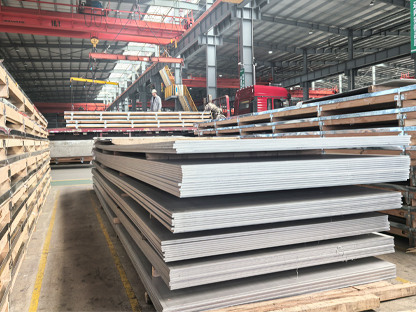
Carbon steel: mainly iron (Fe) and carbon (C), with a carbon content of 0.02%-2.1%, and trace amounts of silicon and manganese (usually chromium/nickel-free).
Stainless steel: contains iron, carbon and ≥10.5% chromium (Cr), and alloying elements such as nickel (Ni) and molybdenum (Mo) are added (such as 304 stainless steel contains 8-10% nickel).
Chromium in stainless steel reacts with oxygen to form a dense chromium oxide passivation film, which isolates the corrosive medium (self-healing properties).
Carbon steel has no passivation film protection, and is easily oxidized and rusted when exposed to a humid environment, and needs to rely on coating protection.
Carbon steel: High carbon steel has strong hardness (suitable for knives and molds), but low plasticity and high brittleness.
Stainless steel: Austenitic steel (such as 304) has excellent toughness and strong impact resistance, but its hardness is generally lower than that of carbon steel.
Stainless steel contains nickel/chromium and is resistant to high temperature oxidation (some models can withstand 800℃);
Carbon steel is easy to soften and deform when it exceeds 300℃.
Stainless steel naturally has a silvery metallic luster and is decorative after polishing (such as home appliance panels);
The surface of carbon steel is dull and rough, and requires electroplating/painting to improve its appearance.
Stainless steel has a strong tendency to harden during work, and it is easy to stick to the knife during cutting and welding requires inert gas protection;
Carbon steel has good plasticity and is easy to weld and stamp (especially low carbon steel).
Carbon steel: low raw material cost (about 1/3 of stainless steel), but requires regular rust prevention and maintenance;
Stainless steel: high initial cost, but long maintenance-free life (up to 5 times more than carbon steel in a humid environment). VI. Environmental protection and sustainability.
Stainless steel is 100% recyclable, and the energy consumption of the recycling process is lower than that of raw metal;
Carbon steel recycling is easily contaminated by coatings and requires pre-treatment to remove paint/plating.